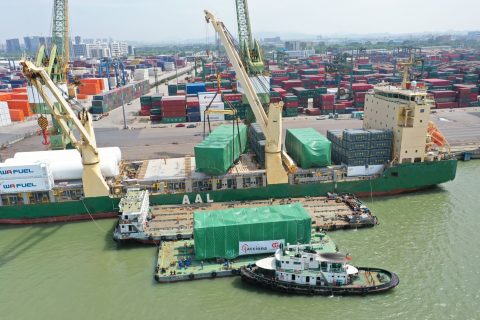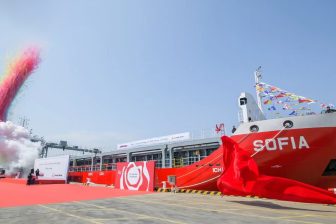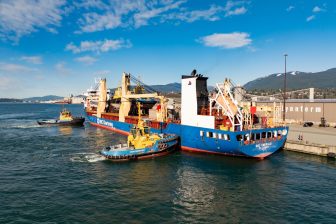
AAL ships project cargo for Australia’s first WTE plant
At the end of September 2021, AAL said that its 19,000 DWT heavy lift multipurpose vessel, the AAL Nanjing, loaded four large chimney sections, with a combined weight of close to 500 metric tonnes and 6,000 cubic metres in size.
The units were manufactured and loaded in Humen, China, and shipped long-haul along AAL’s Asia – West Coast Australia Monthly Liner Service (AUWC) to Henderson in Australia for installation at the Kwinana Waste to Energy (WTE) Plant – the first thermal utility-scale WTE facility in the country.
The A$700 million ($513.7 million) Kwinana plant is located 40 km south of Perth. It will process 486,000 tonnes of industrial and domestic waste every year to generate 36 MW of renewable bioenergy – enough to power 50,000 households – and avoid 486,000 tonnes of CO2 emissions normally emitted by Western Australia’s electricity grid.
Jack Zhou, general manager of AAL China, commented, “We have a dedicated China-based team of chartering, commercial, engineering and operations specialists and their hands-on presence, local contacts, and expertise ensure our Chinese cargo operations run smoothly.
“In fact, the issues we did face were mostly due to local Chinese COVID restrictions, creating port congestion, slow productivity and unavoidable delays of anything up to two weeks.”
He added that heavy lifting operations of this kind require many hands-on-deck to assist with executing the complex shackling, lashing and stowage plan. “On this occasion, local stevedores were not permitted to embark the vessel, and this caused delays and cost far more time and energy for our crew than would normally have been required,” Zhou said.
AAL prioritising project cargo partners
AAL shipping is facing pressure and incentives from container shippers to carry more containers on its mega-sized vessels, to fill the gap left by container carriers and RoRo operators. The whole multipurpose sector is facing the same pressure.
Frank Mueller, general manager of AAL’s Asia – Australia Liner Services stressed,” Despite this, AAL will continue to prioritise the needs of our project, breakbulk, and heavy lift partners and our monthly liner services between Asia and Australia are operated for them, as they have been for the past 26 years.”
The company’s managing director Kyriacos Panayides earlier said that the market continues to be tight and high demand and limited capacity are driven by the spill-over from container capacity shortage. AAL has managed to secure a number of bookings from the segment at healthy rates, carrying cargoes on its core trade lanes – Europe to and from Asia, Asia to and from the US, and Asia to and from Australasia.
However, while a number of companies have opted to charter their vessels at currently high rates to container lines or operators, the company is focusing on project cargo and breakbulk in order to service its long-term customers. However, with MPP vessels chartered to container lines, this is causing further capacity squeeze and is disrupting established scheduling.
You just read one of our premium articles free of charge
Register now to keep reading premium articles.




